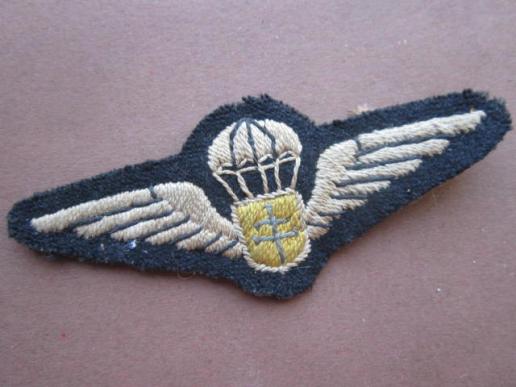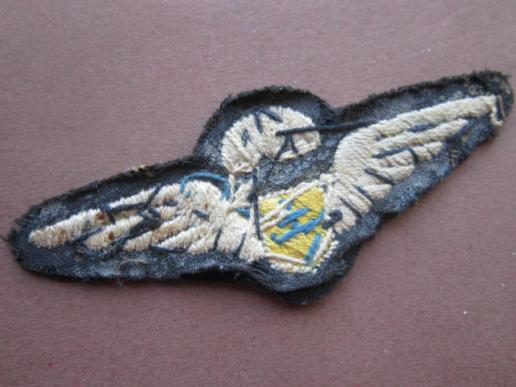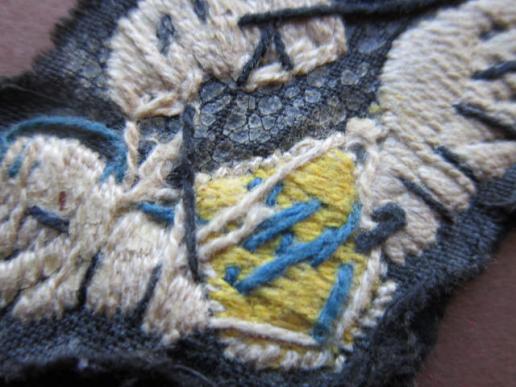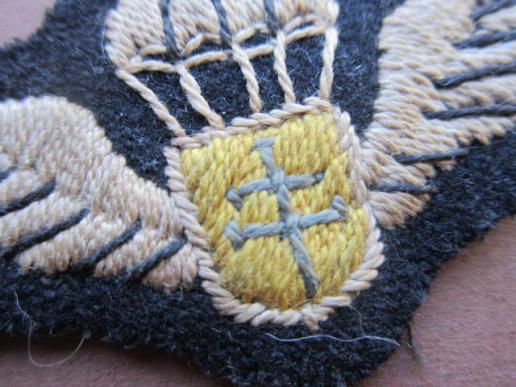A nice example of a original and rare British made Free French parachutist brevet for the WW-II Free French Forces (Forces Francaises Libres - FFL)
This is a perfect rare example of a difficult to find original British made Free French parachutist brevet for the WW-II Free French Forces (Forces Francaises Libres - FFL). As history shows, after the Germans overran France in 1940 and the government surrendered, many French military members escaped to North Africa and England to continue the battle. One of the first steps was the establishment of the First Battalion of the Free French Parachute Volunteers. It is from these volunteers that Captain Berge would take the men to form the 1st Air Infantry Company (1 CIA), later renamed the 1st Parachute Infantry Company (1 CCP). From these airborne forces would come the nucleus for the French Special Air Service when they were transferred to England in December 1942, followed by the newly created 2 nd SAS Squadron in Tunisia who returned to England in February 1943.
Meanwhile, nearly a thousand new French volunteers for new airborne service came from throughout the world to arrive in England . These troops included escaped prisoners of war who came via neutral Spain; volunteers from North Africa, Madagascar and Oceania, sailors from deactivated vessels and from other colonies and territories. These troops, with a cadre from the returning combat experienced French airborne forces, would become what is known as the Free French Force parachutists, serving in several units but the primary units being the French Special Air Service.
And thus in 1943, the Free French Government began to award their unique own parachute qualification insignia. This insignia was awarded to all French personnel who graduated from the British parachute school at Ringway and also to personnel who had previously qualified elsewhere.
This insignia is credited to being designed by Captain Georges Bergé in 1942 to replace the metal insignia of the 1st Infantry Parachute Company (1 CCP) which was too expensive. This was the only insignia authorized to be worn on the left pocket above the medals. The FFL brevet was distributed in 1943 to all French breveted in the Ringway Central Landing School and later to other qualified French parachutists who had qualified earlier at other parachute schools in the Middle East, North Africa and elsewhere. The metal version of the insignia was initially made in Aldershot , UK and later in Ceylon and Indochina . After the war numerous parachutists went to Indochina where many variations have been manufactured locally to replace their original insignia. . Many parachutists at the time, who did not come from the FFL, replaced the Cross of Lorraine with a star.
The wing shows some signs of wear and does appear to have been on a uniform. This badge will be a great addition to any Special Forces WW2 collection.
Code: 51168





